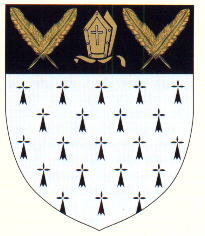Saint-Amand (Pas-de-Calais): Difference between revisions
Jump to navigation
Jump to search
Knorrepoes (talk | contribs) m (Text replace - "'''Origin/meaning :'''<br/>" to "====Origin/meaning====") |
Knorrepoes (talk | contribs) m (Text replace - "|width="15%"|50 px|right |}" to "|width="15%"|50 px|right |}<seo title="Armorial de France, Armoires, Blason" />") |
||
| Line 3: | Line 3: | ||
|width="70%" align="center" |'''Heraldry of the World<br/>Civic heraldry of [[France]] - [[Armorial de France]]''' | |width="70%" align="center" |'''Heraldry of the World<br/>Civic heraldry of [[France]] - [[Armorial de France]]''' | ||
|width="15%"|[[File:France.jpg|50 px|right]] | |width="15%"|[[File:France.jpg|50 px|right]] | ||
|} | |}<seo title="Armorial de France, Armoires, Blason" /> | ||
'''SAINT-AMAND''' | '''SAINT-AMAND''' | ||
Revision as of 10:30, 6 November 2012
| Heraldry of the World Civic heraldry of France - Armorial de France |
SAINT-AMAND
Département : Pas-de-Calais
Origin/meaning
The arms above were proposed in 1994 and are based on the arms of the Cardevacque family, who ruled the village for a long time. Their arms were ermine, with a chief of black. To distinguish the arms from the arms of the family, a mitre and two palm leaves are added to the chief. These are symbols for the local patron saint, St. Amand.
Literature : Bouchet et al, 1994

